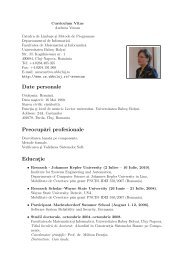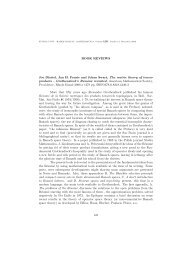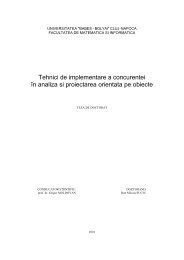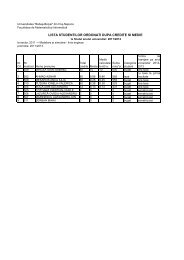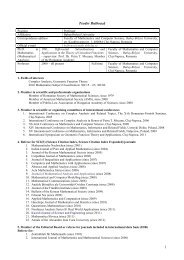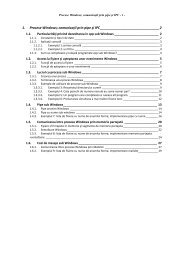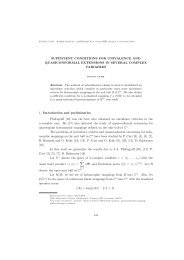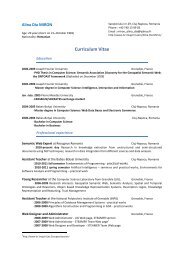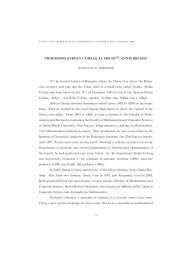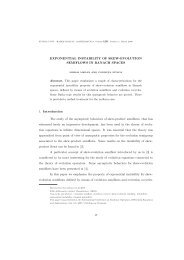CONTENTS
CONTENTS
CONTENTS
Create successful ePaper yourself
Turn your PDF publications into a flip-book with our unique Google optimized e-Paper software.
KNOWLEDGE ENGINEERING: PRINCIPLES AND TECHNIQUES<br />
Proceedings of the International Conference on Knowledge Engineering,<br />
Principles and Techniques, KEPT2009<br />
Cluj-Napoca (Romania), July 2–4, 2009, pp. 215–218<br />
DURATION ESTIMATION OF A WORK PACKAGE<br />
ATTILA VAJDA (1)<br />
Abstract. Estimating the effort and duration of software work packages will be<br />
never an exact science. Too many variables are affecting the result. This article<br />
explores the relation between the effort and duration in software engineering<br />
projects and presents an empirical model to predict work package duration based<br />
on estimated effort and team size.<br />
1. Introduction<br />
In the early days of computing, the project total cost was influenced more by the<br />
computer-based system costs then the software costs. Nowadays, software is the most<br />
expensive element in most computer based systems; any cost estimation deviation in<br />
the software development process will influence considerably the project profit and<br />
loss. Several studies [1], [2], [3] demonstrated that grand majority of software development<br />
projects are finished over budget and 30% of large projects are never finished.<br />
No wonder that project cost estimation became crucial, challenging aspects of the<br />
software development process and theme of many researches focusing on minimizing<br />
the gap between the forecasted and real software project costs. Related to project<br />
cost estimations, several researches were done already starting with 1965 (Nelson),<br />
then in the 70s the SLIM model was created by Putnam and Myers, in the 80’s the<br />
PRICE-S model by Park, the SEER by Jensen, the COCOMO by Boehm, in the 90’s<br />
the Checkpoint by Jones [4]. The estimation models, techniques resulted form the<br />
researches are numerous, some are sophisticated mathematical and statistical models,<br />
and others are expert system based [5]. Most of them are calibrated for medium and<br />
long term projects, only a very few can be adjusted for small projects performed by<br />
small teams. Many people work on small projects, which are generally defined as<br />
a staff size of a couple of people and a schedule of less than six months. Because<br />
the estimates for these small projects/work packages (WP) are highly dependent on<br />
the capabilities of the individual(s) performing the work, the best approach is to be<br />
estimated directly by those assigned to do the work. In the reality this is not always<br />
possible, and usually the project effort estimation is performed by a single person<br />
who can be the technical leader or a senior developer. Then the project duration is<br />
2000 Mathematics Subject Classification. 68N30.<br />
Key words and phrases. project duration, effort estimation, software engineering.<br />
215<br />
c○2009 Babe¸s-Bolyai University, Cluj-Napoca



